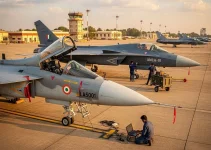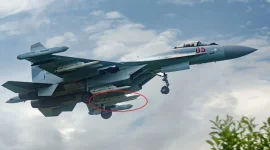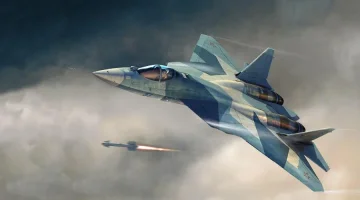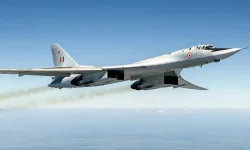In a major proposal aimed at strengthening long-standing defence ties, Russia’s primary tank manufacturer, Uralvagonzavod, has put forward its advanced T-14 Armata tank for the Indian Army's future requirements.
The company has expressed a keen interest in partnering with India’s defence industry to develop a customized version of the tank for the nation's Next Generation Main Battle Tank (NGMBT) program.
This offer involves a potential collaboration with India's Combat Vehicles Research and Development Establishment (CVRDE) or other public sector defence units.
The proposal is strategically timed to align with India’s "Make-I" procurement category, a framework designed to boost indigenous defence production.
Under this initiative, the Indian government provides up to 70% of the funding for developing prototypes, creating a favourable environment for joint ventures that emphasize domestic manufacturing and technology transfer.
The partnership builds on a history of successful collaboration between the two nations.
Uralvagonzavod was instrumental in the technology transfer for the T-90S tanks, which are now manufactured in India by the Heavy Vehicles Factory under the name "T-90 Bhishma."
This existing program has achieved an impressive 83% level of indigenous content, which includes the complete localization of the tank's engine. Russian officials have stated their intention to exceed this level of local participation with the T-14 Armata project.
Officials from Uralvagonzavod have suggested that the T-14 Armata would serve as an ideal successor to the Indian Army's extensive but aging fleet of T-72 tanks, which form the backbone of its armoured corps.
A key aspect of the Russian offer is the significant scope for customization.
In a notable gesture, the company has confirmed its readiness to integrate India’s domestically developed DATRAN-1500HP engine into the Indian variant of the T-14, should the Indian military require it.
The standard T-14 is equipped with a 1,500-horsepower 12N360 diesel engine, but this flexibility allows for deeper Indian technological involvement.
The T-14 Armata is widely considered a significant leap in tank design.
Its revolutionary features include an unmanned, remotely operated turret, which allows the three-person crew to be housed in a separate, heavily armoured capsule in the hull for enhanced safety.
The tank is also equipped with advanced modular armour, state-of-the-art digital control systems, and the "Afghanit" Active Protection System (APS), designed to intercept incoming anti-tank missiles and rockets.
While the Indian Army is still in the early stages of evaluating options for its NGMBT, also known as the Future Ready Combat Vehicle (FRCV) project, the Russian proposal is a strong contender.
The offer's focus on deep localization and willingness to incorporate Indian-made systems aligns well with the "Make in India" policy, positioning the T-14 as a compelling option for the future of India's armoured forces.






